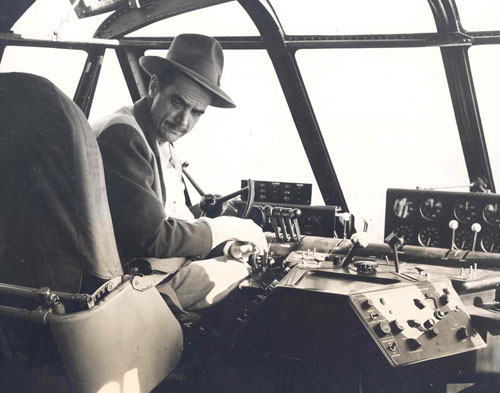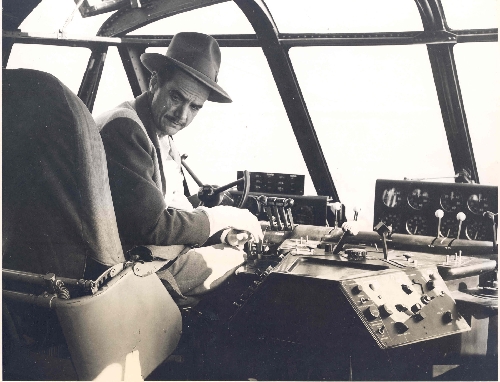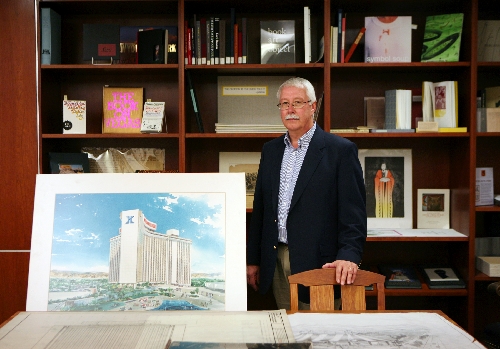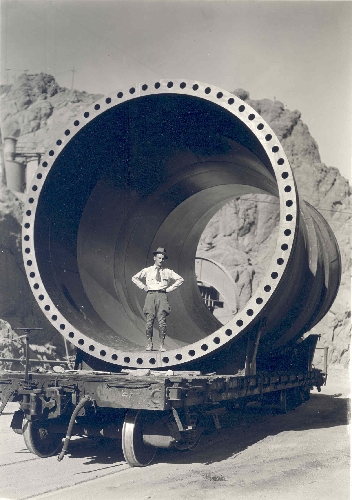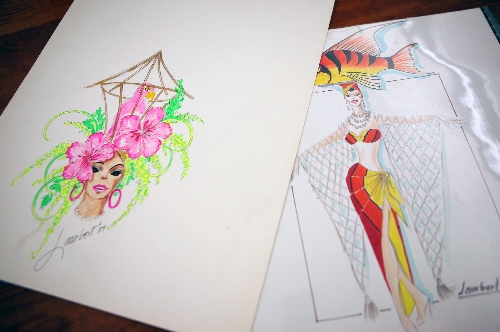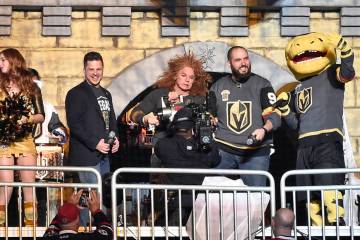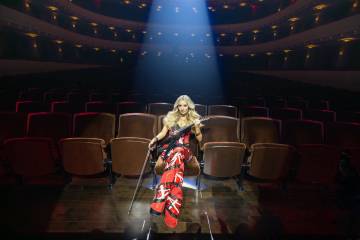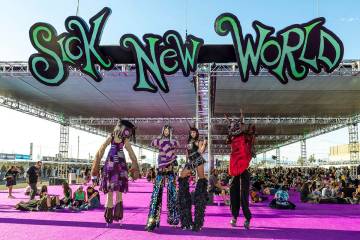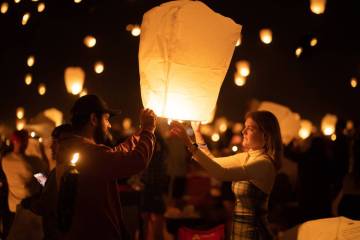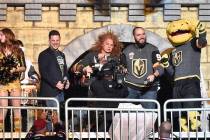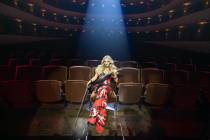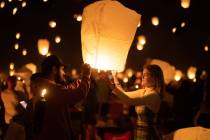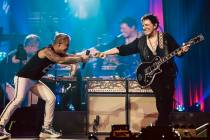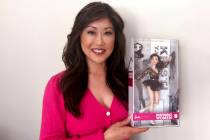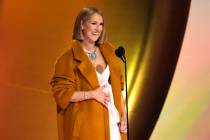Digital exhibits from UNLV enable virtual tours of collections
Feel like visiting a museum this weekend to, maybe, see a collection of showgirl costume drawings, or a photographic retrospective of Howard Hughes' accomplishments in aviation, or some casino architectural sketches?
No problem. Brew up a mug of cocoa, fire up the laptop, curl up in your jammies and have at it.
Then, for this totally free, no-need-to-leave-the-house museumgoing experience, feel free to send an email of thanks to University of Nevada, Las Vegas Special Collections, which has taken to the Internet to share its treasures.
Peter Michel, director of Special Collections - a division of UNLV University Libraries - calls the virtual exhibitions "digital collections."
Almost a dozen are now online (http://digital. library.unlv.edu), including the most recent, "Dreaming the Skyline: Resort Architecture and the New Urban Space," which examines the work of architects Martin Stern Jr. and Homer Rissman, who are noted for developing the integrated Las Vegas resort.
Each digital collection features digitized images of artifacts, documents and photos from the department's collection, augmented by time lines, biographies and context-providing copy blocks of the sort you'd see in a museum or art gallery.
The idea, Michel said, is to offer "some narrative, some context so it's not just a wall of pictures. It's pictures arranged in a certain way with a narrative stream that hopefully is not too intrusive."
Current exhibits include digital collections devoted to the development of Nevada, showgirls, menus, Dean Martin's years at the Sands hotel and Howard Hughes.
"It's pretty much like a multidimensional interactive museum," Michel said.
The digital exhibit project began in 1996 with a physical exhibit Michel curated about Dean Martin.
"We have all these great photos of Dean Martin and the Rat Pack, and after we had it up, I thought, 'It's too bad we can't do more with this,' " Michel recalled.
So, the Dean Martin digital collection was created. Since then, several more have gone up, all using "very, very sophisticated" technology compared with those early efforts.
All of the digital collections focus in some way on the history of Las Vegas and Southern Nevada. For example, "Welcome Home, Howard," a digital collection devoted to Howard Hughes, was conceived after the 2004 film "The Aviator" was released.
"I took shameless advantage of the publicity to put up a lot of our photos about Howard Hughes with airplanes," Michel said. "It was incredibly popular, as you can imagine."
The digital collections also allow the linking of documents and artifacts in ways that would be difficult in real life.
"We have maps, photos, architectural drawings, posters, all sorts of things that you could come in to see," Michel said. "When we do digital collections, we can pull together all those disparate types of collections and present them in a way that makes sense.
"So it's not just, 'Here's an interesting photo,' but 'Here's an interesting photo to go with this interesting map, which goes with this interesting diary.' It's telling a story."
Michel said each digital collection takes about a year to assemble, in a process that includes developing a narrative, researching the materials that are available, researching and writing text, and digitizing and cataloging materials for online use.
Some of the items used in digital collections are fragile or cumbersome to work with in real life, noted Cory Lampert, head of digital collections.
"For instance, architectural drawings are not only fragile but large," she said. "And you need a big table to roll them out on, and even then the detail is quite small."
Lampert noted that online photos from, say, a Google image search typically lack context.
"We're really trying to add some value, because the fact is the biggest problem for undergraduates, and even those who are just users of the Internet, is information overload. You do a search and you get millions of results."
Here, she said, the goal is to give visitors "not only cool stuff, not only visually interesting stuff, but (that) this stuff is part of a story."
Granted, Lampert said, "it will never replace the experience of finding a rare book or seeing the original Constitution or something like that. But it opens the door for people who may not know something exists or may not know where to start their search.
"So you can serve two purposes. When we put up a new collection, it will drive people to the physical collection. On the other hand, we may touch people who are never going to be in Las Vegas to see the physical collection."
Michel added that it's interesting to see how viewers make use of the collections. For example, he once received a call from an astrophysicist/railroad buff who contacted him to request information about a railroad whose dining car menu was featured in the menu exhibit.
And, after the Hughes exhibit went up, Michel said he not only fielded calls from people wanting to sell or buy airplane parts, but a request from somebody "who asked me if I could pull the DNA off of one document."
Contact reporter John Przybys at jprzybys@reviewjournal.com or 702-383-0280.
SEE FOR YOURSELF
To explore UNLV Special Collections' digital collections, visit:
digital.library.unlv.edu.



